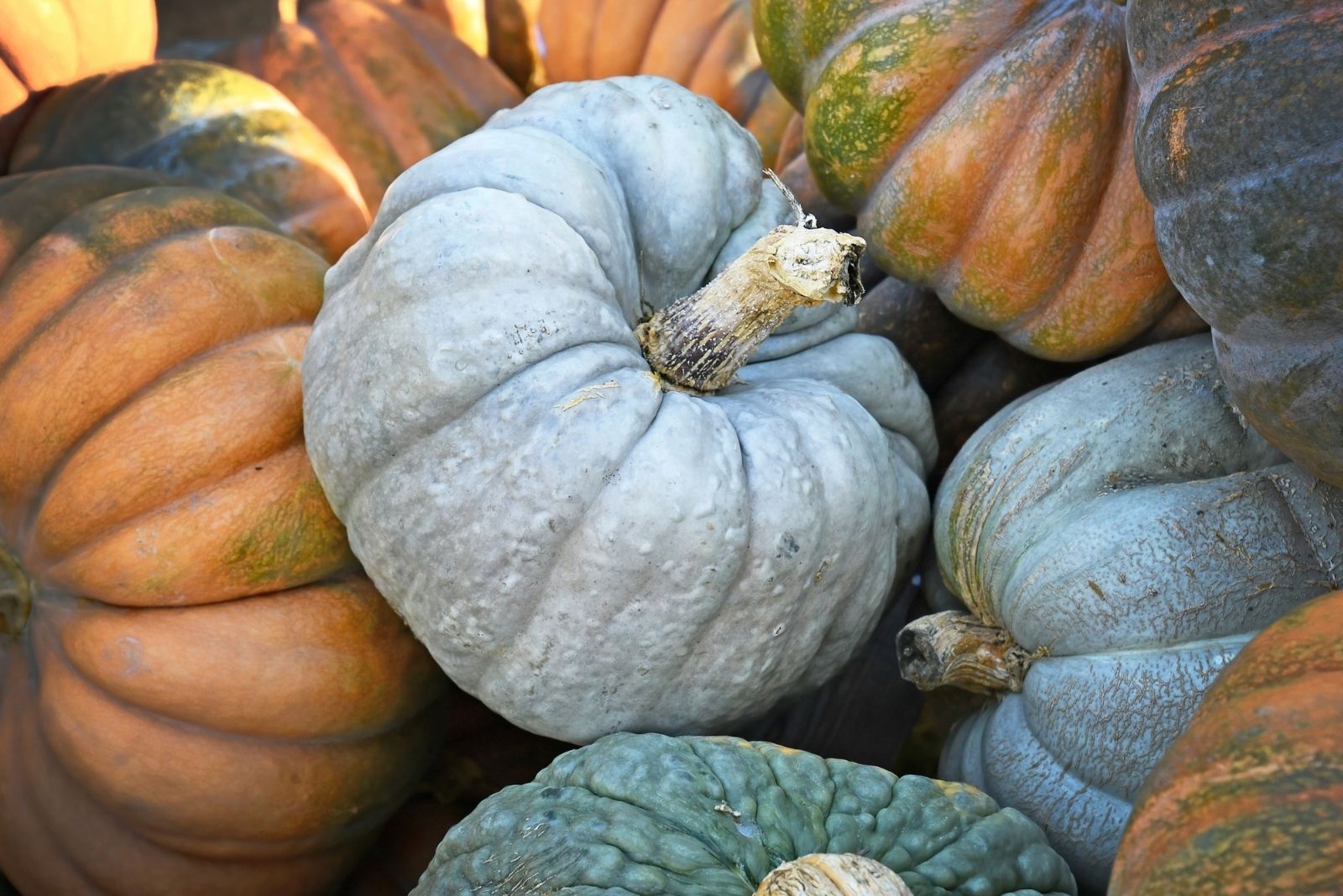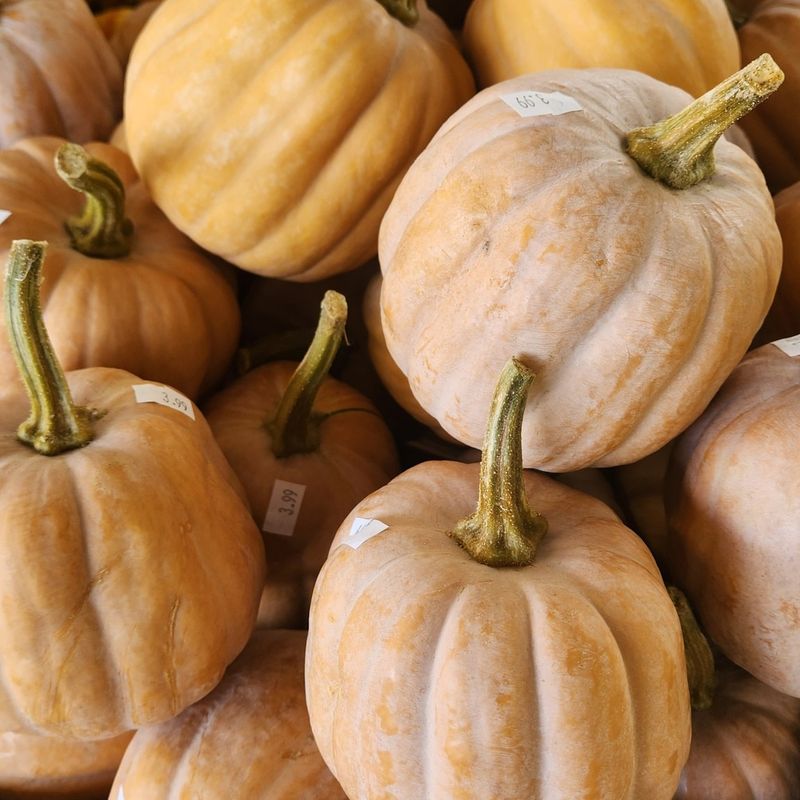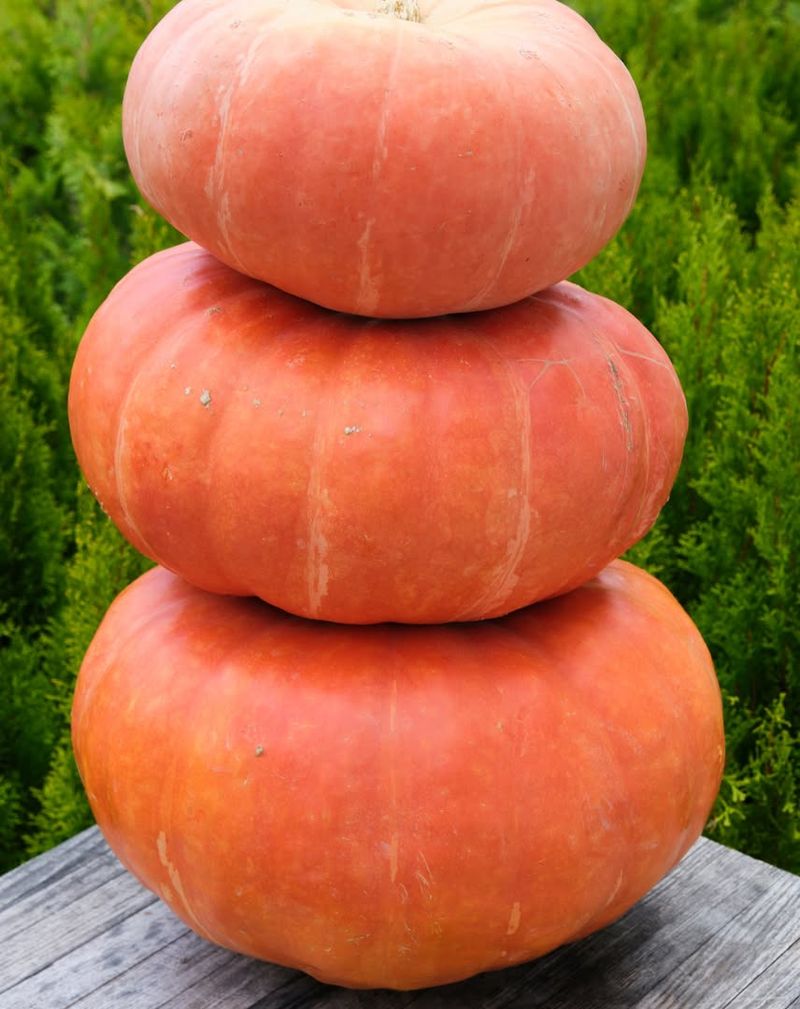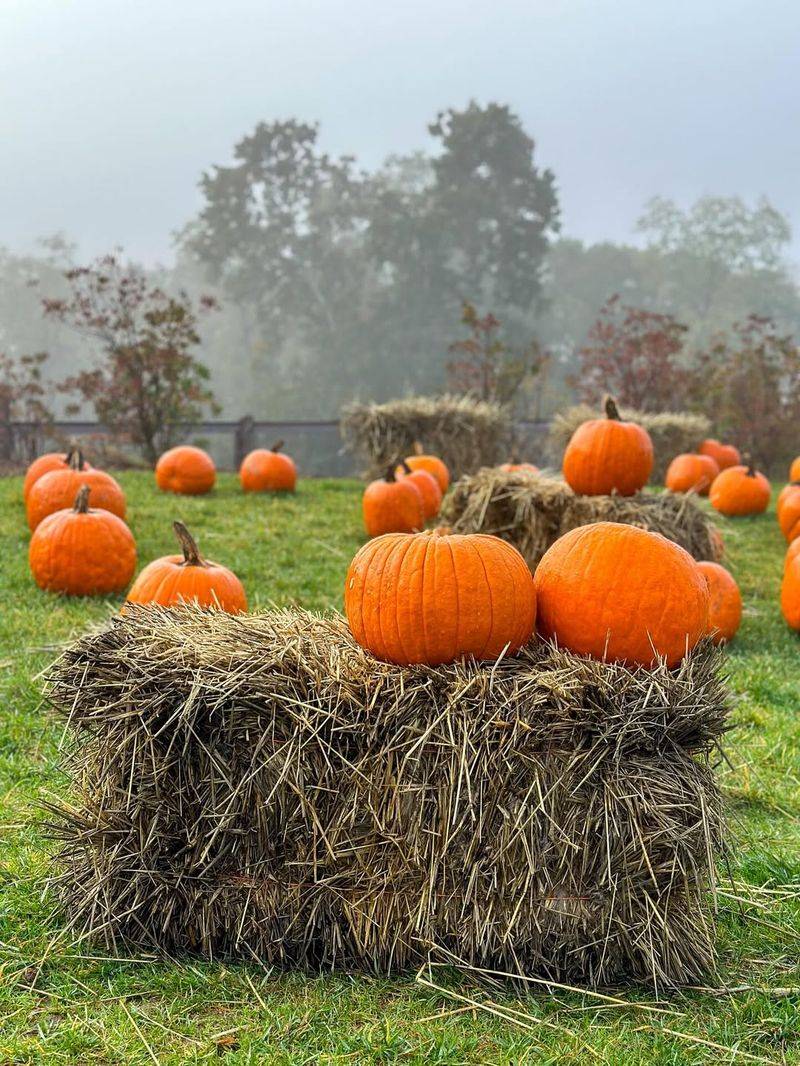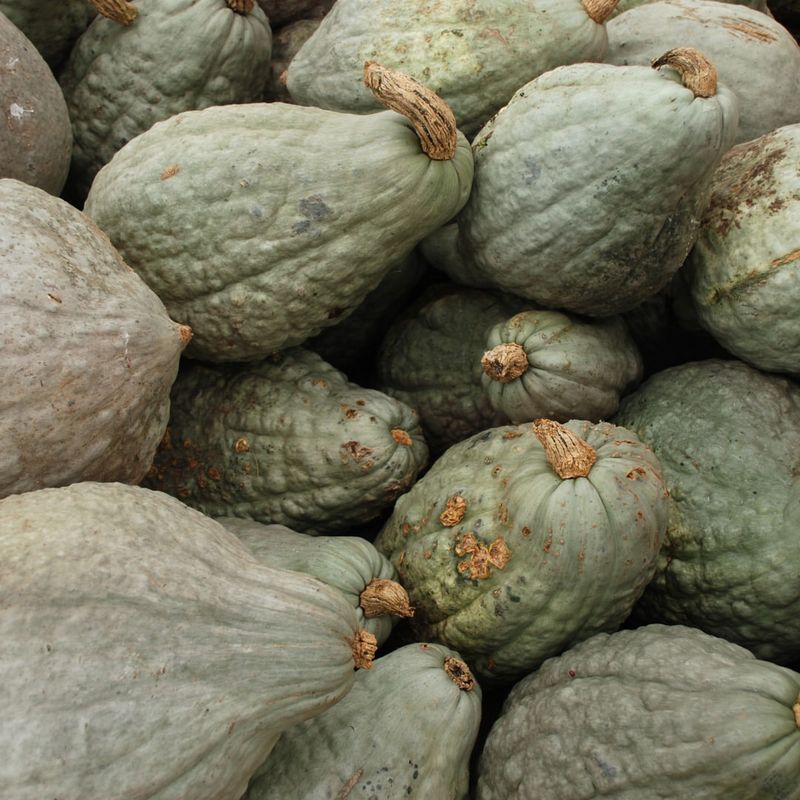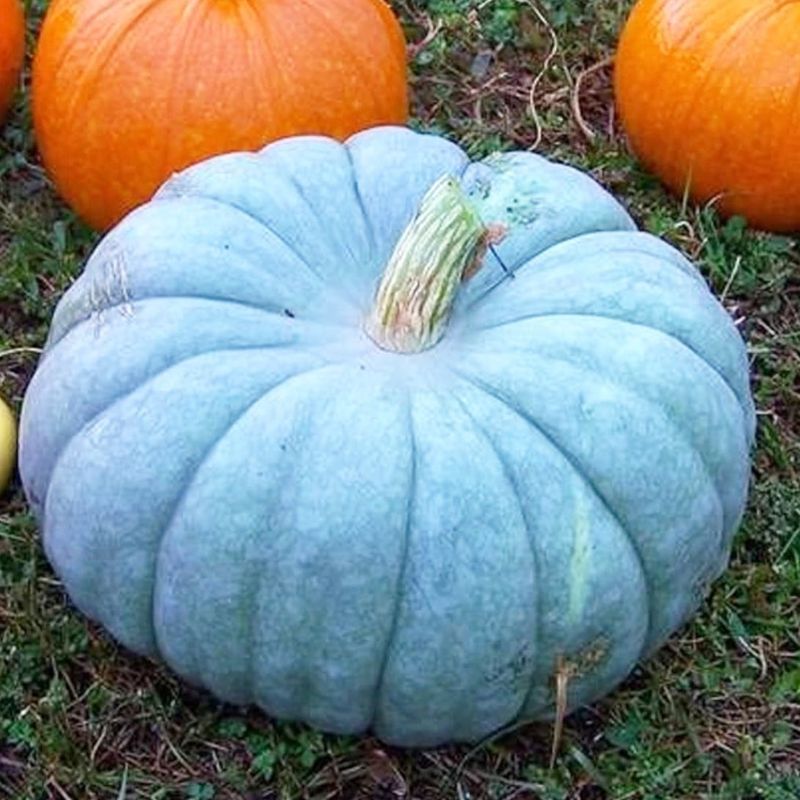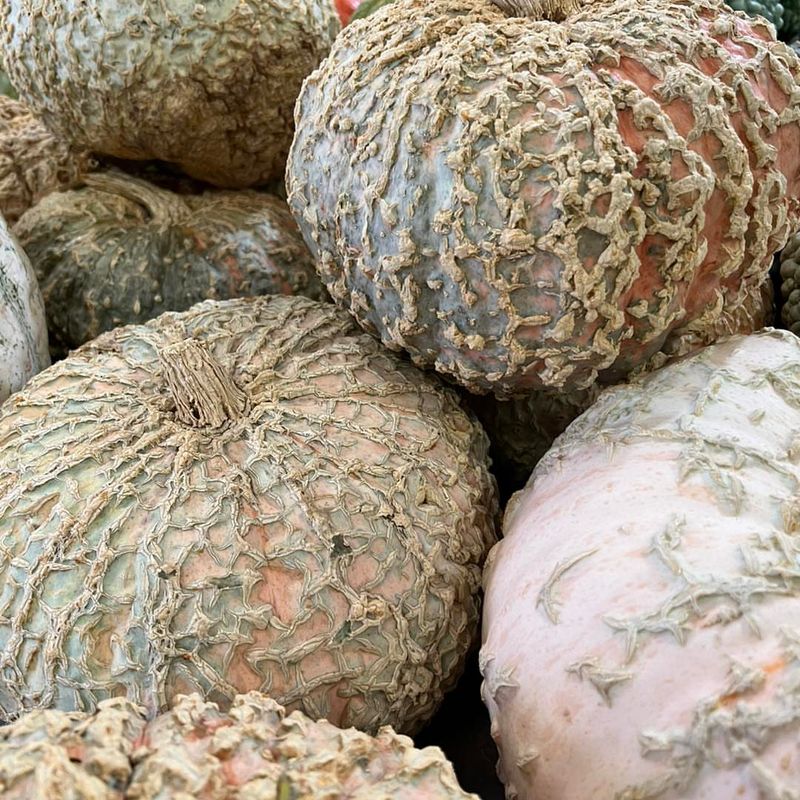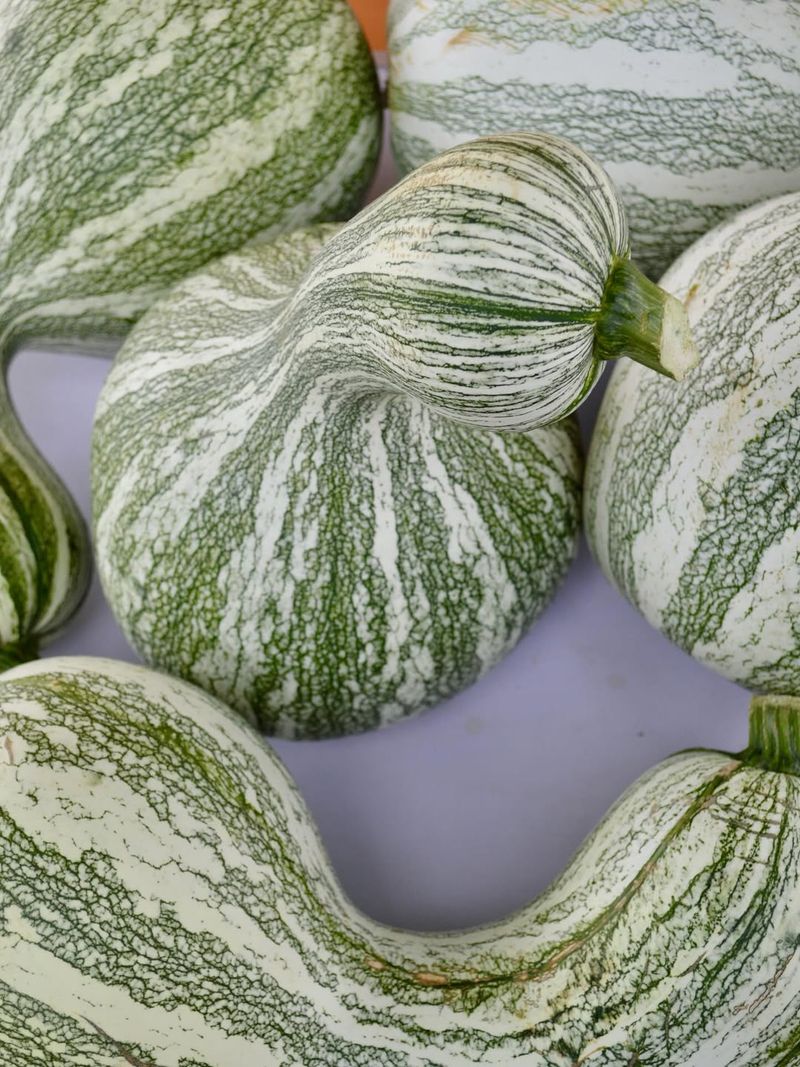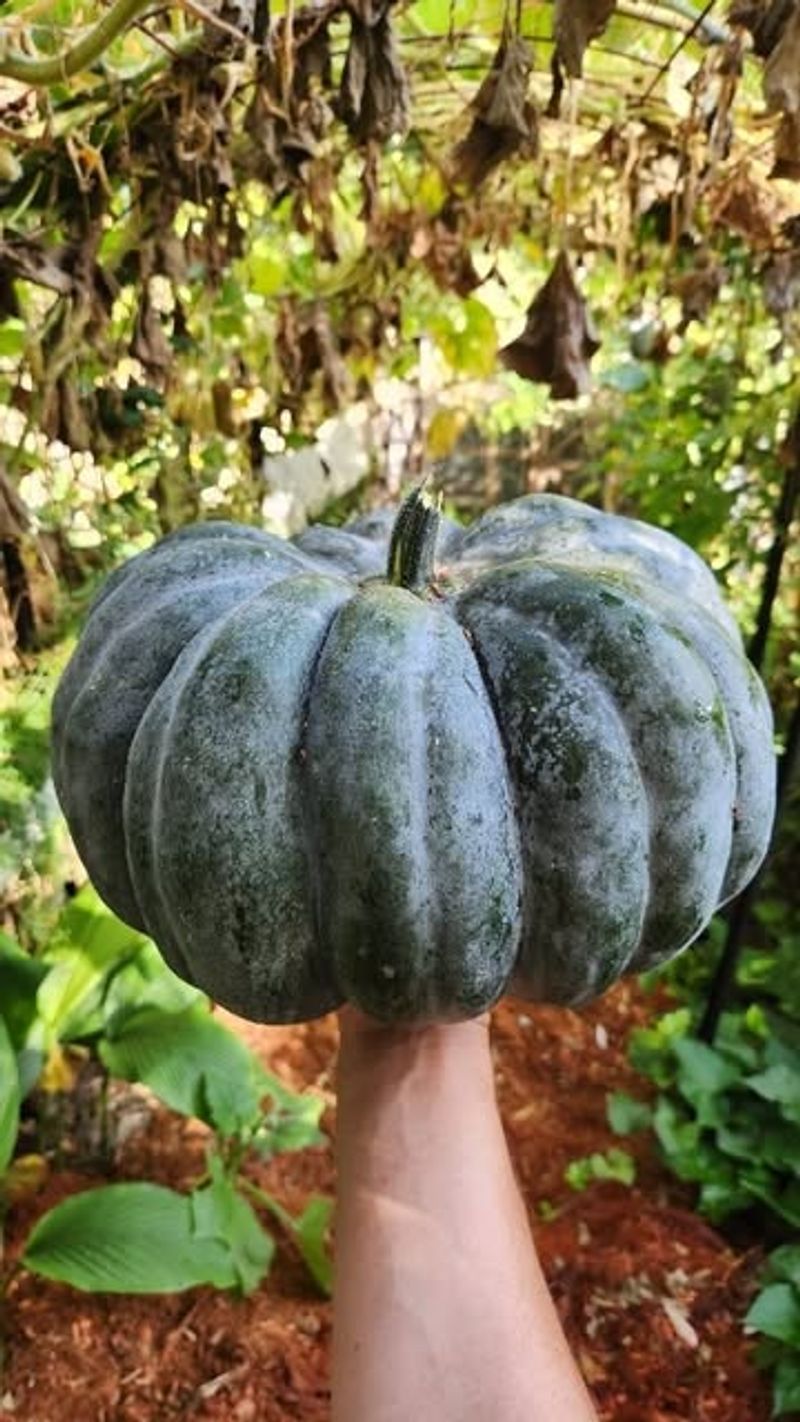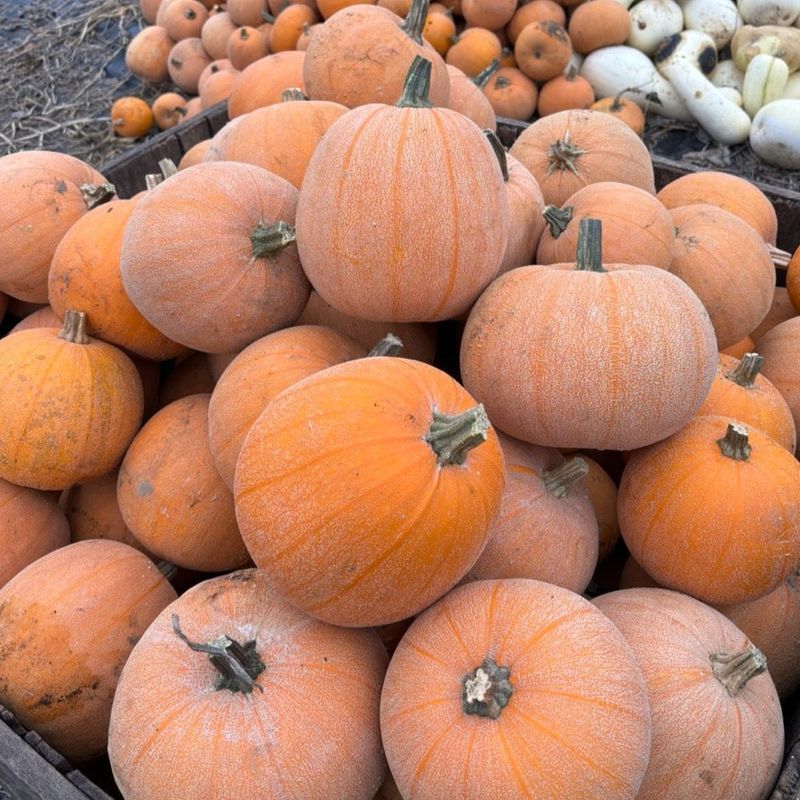Kentucky’s warm summers and mild falls create ideal conditions for growing heirloom pumpkins. These traditional varieties offer flavors, colors, and textures you simply won’t find in regular store-bought pumpkins.
Whether you’re a seasoned gardener or just starting out, these nine heirloom varieties thrive in Kentucky’s climate and will bring character to your garden and dinner table.
1. Long Island Cheese Pumpkin
Named for its wheel of cheese appearance, this tan-colored beauty has been grown since the 1800s. The flesh is smooth, stringless, and makes exceptional pies.
I’ve found that Kentucky’s soil brings out the sweet, earthy flavor that makes these pumpkins special. They store remarkably well too – I’ve kept them for up to a year in cool, dry conditions.
Plant these after the last frost and give them plenty of room to spread. They’re resistant to many common diseases that plague Kentucky gardens, which means less work and more pumpkins.
2. Rouge Vif d’Etampes
The ‘Cinderella pumpkin’ earned its nickname because it resembles the coach in the fairy tale. Its vivid red-orange skin and flattened shape make it stand out in any Kentucky garden patch.
This French variety dates back to the 1800s and grows wonderfully in our climate. The medium-sweet flesh works beautifully for both savory dishes and desserts.
For me, nothing says fall in Kentucky quite like these decorative beauties ripening in September. They need rich soil and regular watering through our hot summers, but reward you with 10-15 pound fruits.
3. Connecticut Field Pumpkin
The grandfather of American pumpkins has been grown since before European colonization. Native Americans cultivated these alongside corn and beans in the traditional Three Sisters method that works wonderfully in Kentucky’s growing conditions.
These large, orange pumpkins can reach 15-25 pounds and have that classic jack-o’-lantern shape we all recognize. The flesh tends to be a bit stringy but makes good pies and soups.
Kentucky’s long growing season gives these heirlooms plenty of time to mature fully. Plant them in hills with compost-enriched soil for best results.
4. Blue Hubbard Squash
Though technically a squash, Blue Hubbards are often grouped with pumpkins and deserve a spot in any Kentucky garden. Their blue-gray skin hides sweet, orange flesh that tastes better than most orange pumpkins.
These monsters can grow enormous – sometimes over 40 pounds! The hard shell means they store exceptionally well through winter, perfect for Kentucky’s variable climate.
In my experience, Blue Hubbards need plenty of space and rich soil. Our hot Kentucky summers help develop their sugar content, resulting in delicious roasted dishes, pies, and soups come fall.
5. Jarrahdale Pumpkin
Hailing from Australia, these blue-gray pumpkins have adapted beautifully to Kentucky growing conditions. Their deeply ribbed exterior and sweet, golden flesh make them both decorative and delicious.
Jarrahdales typically weigh 6-10 pounds and have an exceptionally long storage life. The firm flesh doesn’t get stringy when cooked, making them perfect for pies, soups, and roasting.
Kentucky gardeners appreciate how these pumpkins resist powdery mildew, a common problem in our humid late summers. Give them full sun and consistent water for best results.
6. Galeux d’Eysines
Looking like something from another planet, this French heirloom develops corky warts as it ripens – the more sugar in the flesh, the more warts appear! Don’t let the unusual appearance fool you; the salmon-pink flesh is exceptionally sweet.
Kentucky’s warm growing season gives these pumpkins time to develop their characteristic sugar deposits. They typically reach 10-15 pounds and have a flattened shape.
I plant these every year in my central Kentucky garden. They need rich soil and consistent moisture but aren’t as sprawling as some varieties, making them suitable for smaller spaces.
7. Green Striped Cushaw
This Native American heirloom has been grown in Kentucky for generations. The distinctive crookneck shape and green-striped white skin make it instantly recognizable in the garden.
Cushaws are heat and drought tolerant, perfect for handling Kentucky’s sometimes challenging summer conditions. The yellow flesh is less sweet than other varieties but makes excellent pies when combined with spices.
Many Kentucky families pass down recipes specifically for Cushaw pumpkins. They’re also resistant to squash vine borers, a serious pest that troubles many Kentucky gardeners. Plant these in late spring after soil warms up.
8. Musquée de Provence
French market pumpkins bring old-world charm to Kentucky gardens. Their deeply lobed, flattened shape and gradual color change from green to rich brown as they mature makes them fascinating to grow.
The deep orange flesh is dense, sweet, and almost meltingly smooth when cooked. Kentucky’s growing season allows these beauties to reach their full 15-20 pound potential.
These pumpkins need space to sprawl and rich soil to produce well. The reward comes in fall when their exceptional flavor enhances everything from soups to desserts. Our humid Kentucky summers don’t seem to bother them much either.
9. Winter Luxury Pie Pumpkin
Small in size but huge in flavor, this heirloom variety has been prized by pie makers since the 1890s. The netted skin pattern looks like it’s covered in delicate golden lace, making it as pretty as it is tasty.
At just 5-7 pounds, these pumpkins are perfect for Kentucky home gardeners with limited space. The fine-grained, sweet flesh produces what many consider the ultimate pumpkin pie.
Kentucky’s growing season gives them plenty of time to develop their exceptional sugar content. I’ve grown these in both eastern and western parts of the state with great success. They store well for months in cool, dry conditions.

